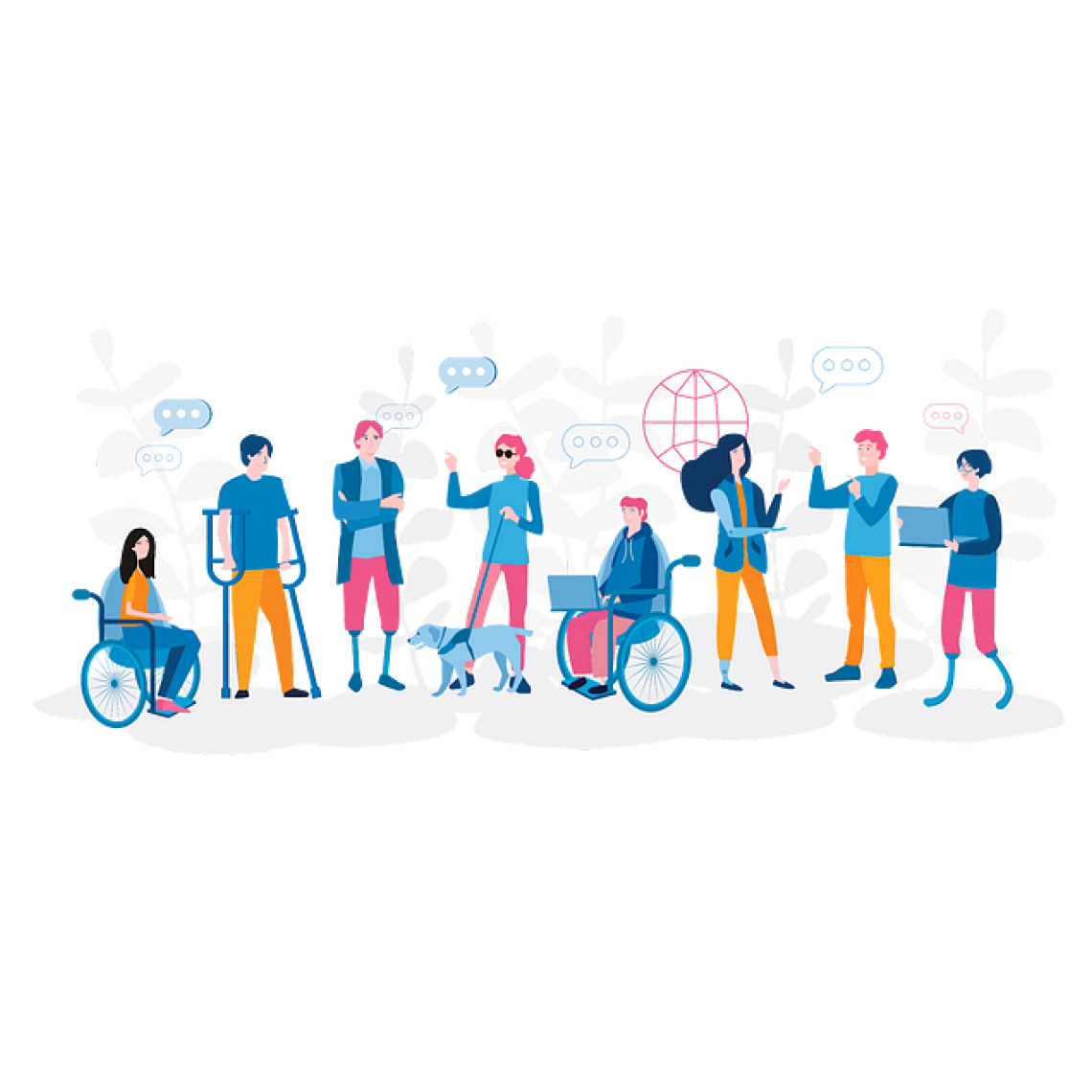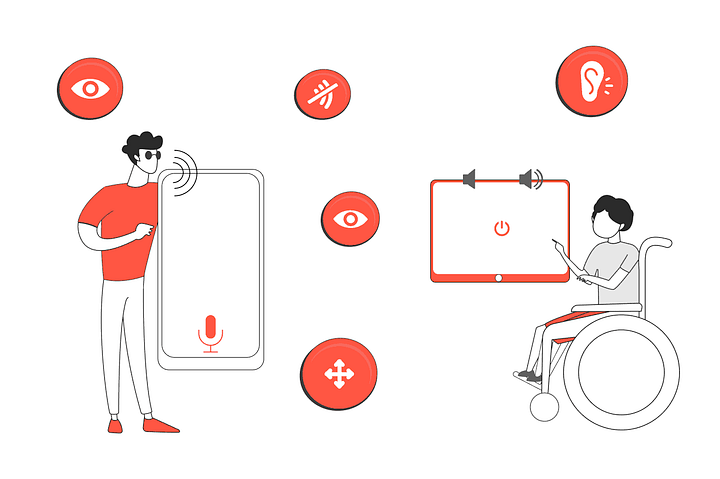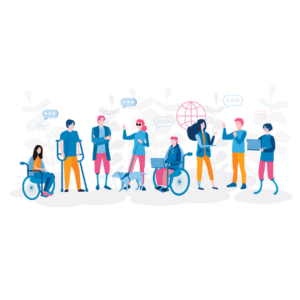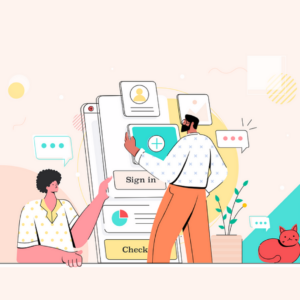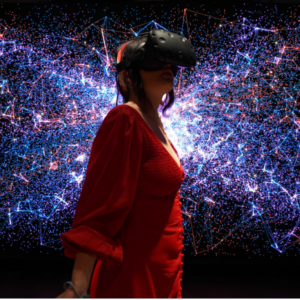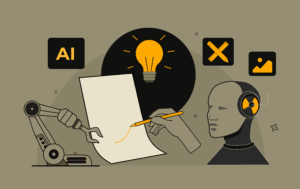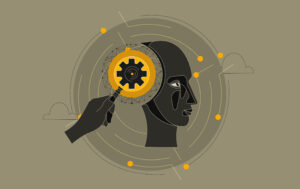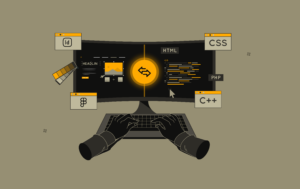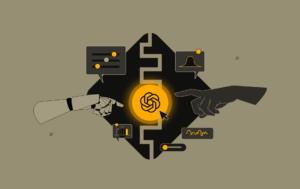What is inclusive design?
Inclusive design is about designing for all kinds of users and addressing their needs. Such products are designed for all sets of users but generally offer a common solution to user needs and problems. In a way, inclusive designs go beyond accessibility as they not only help people with disabilities but also serve marginalized or underserved user groups that are often overlooked in the design process.
A UX designer Mandy Cornwell explains in one of her articles Inclusion first: How to make your product accessible and inclusive that accessibility is a checkpoint in the journey to inclusivity. It is a part of the process to make designs inclusive i.e., a design for everyone.
Inclusivity is the final destination, while accessibility is a halfway point.
People with physical disabilities, mental disorders, oppressed minorities, different cultures, religious beliefs, and other such user groups might feel neglected while interacting with computers or digital products. Most often than not, designs fail to address the nuances of society and only service an ideal user base. This is why we need inclusive designs to make everyone feel seen and heard.
How to design inclusively?
As user experience designers we need to make sure that our designs should have no user group excluded in our product interactions. At the same time, we must ensure that inclusive designs meet all the UX and UI design standards as well.
Speaking of exclusivity in designs, we often experience exclusion like denial of access, impersonal content, frustrating navigation, demeaning experiences, and much more. Considering this as a problem, the solution is to design something that values each user and makes users feel safe and welcome to use the product.
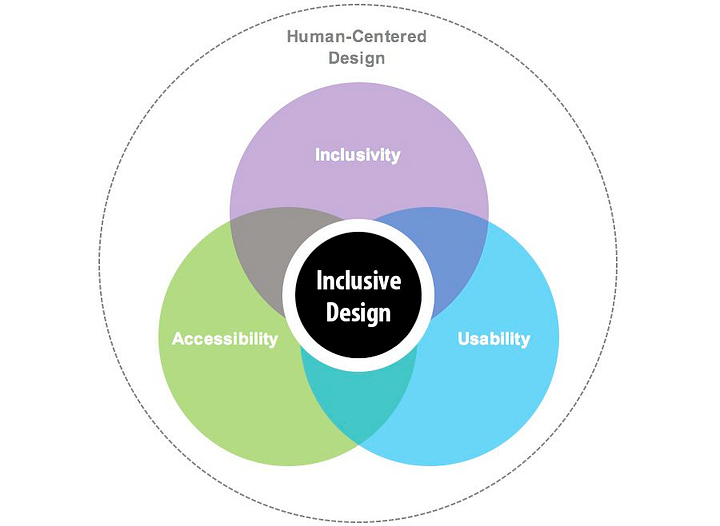
Accessibility, inclusivity, and usability are the most essential aspects of human-centered design. They aim to make a product usable for all kinds of user groups. While designing a solution for a specific problem, as UX designers we need to focus on how to make the product accessible. For example, voice assistance has been originally introduced for people with vision impairment or other disabilities but it has proven to be useful for other (physically able) users as well in situations where their hands are occupied using a device.
Inclusive design happens only when having a diverse team and user involvement in the design and its process. Let us see these two critical factors in detail below.
Diverse design teams
To design products that are made for everyone, we need the right team. Every one of us has biases for something or the other. While designing products for users, the UX designer must avoid having bias over the design. As humans, we always assume that other people will have experiences similar to ours and that will unconsciously lead to us being biased over certain actions.
To avoid biases, we need to have a diverse team to broaden our perspectives. Having a team with different cultures, races, practices, genders, abilities, etc., will help us significantly in removing individual biases and designing truly inclusive products.
User research
Users are our main stakeholders, we design solutions (products) for them. It is very important to include users in our design process. They are the most essential part of the process, and that is why we need to conduct user research and document user stories, maps, and personas to understand them and their needs. The accessibilities of inclusive design are widely supported by having users involved in the entire design process. Each user is unique but can definitely help to design something to use that is useful for everyone. For example, when designing a supporting bar for disabled people while crossing the road, it can also be helpful for other users like pregnant women, etc.
Considerations for inclusivity
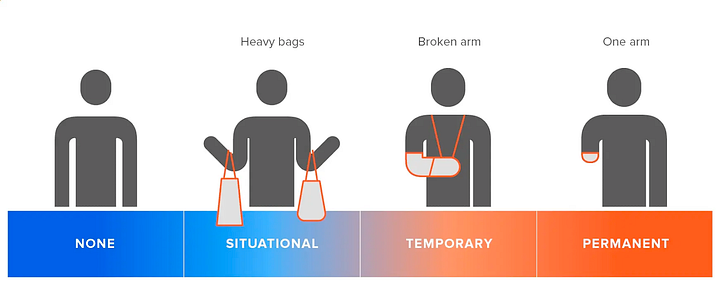
Considering different kinds of disabilities
It is important to keep a few things in mind that can help in designing inclusive experiences.
Using inclusive images:
The images used in the design must represent all user groups with respect to their pieces of information. It should not be excluding any user group.
Abstracting:
Abstraction is nothing but incorporating real-time images into digital products so that users can find it easier to use them.
Diverse design:
While designing the layout and structure every design element should include all types of users. It is important to have an inclusive design practice in every UX process.
Forms:
Forms are specially designed for collecting user information. The information is mostly specific to each user. While collecting that information, the right questions need to be asked and certain points to take into consideration while creating a form.
- Is it needed to ask a specific question in the first place?
- How to ask the question?
- What answers to make available for users to select from?
Easy language:
Inclusivity is the usage of simple and easy language. Easy language makes the information more accessible for all user groups. Inclusivity means diversity in groups. There are various groups of users and they speak different languages as their mother tongue. The complicated language will make it more difficult for them to understand and perform the task.
Adding accessibility functions (voice, text readers, vibration, etc.)
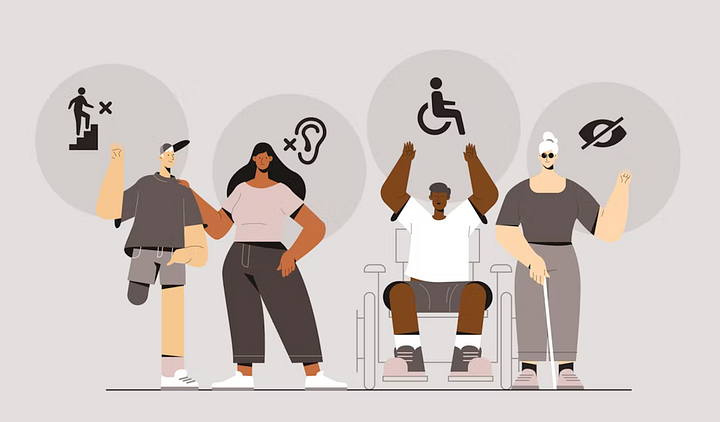
Alexa, Siri, Google Assistant, and more such AI-based technologies are helping people with disabilities interact with technology and function better in the world around them. These voice assistive products feature a female voice as the default voice (a few of them don’t have any alternative voice option). Having a female voice as default is not a coincidence, it is a well-designed feature. Growing up, we were all taught that women are calm, respectful, and helpful. So they have added a female voice for assistance to maintain the perception and serve people better.
